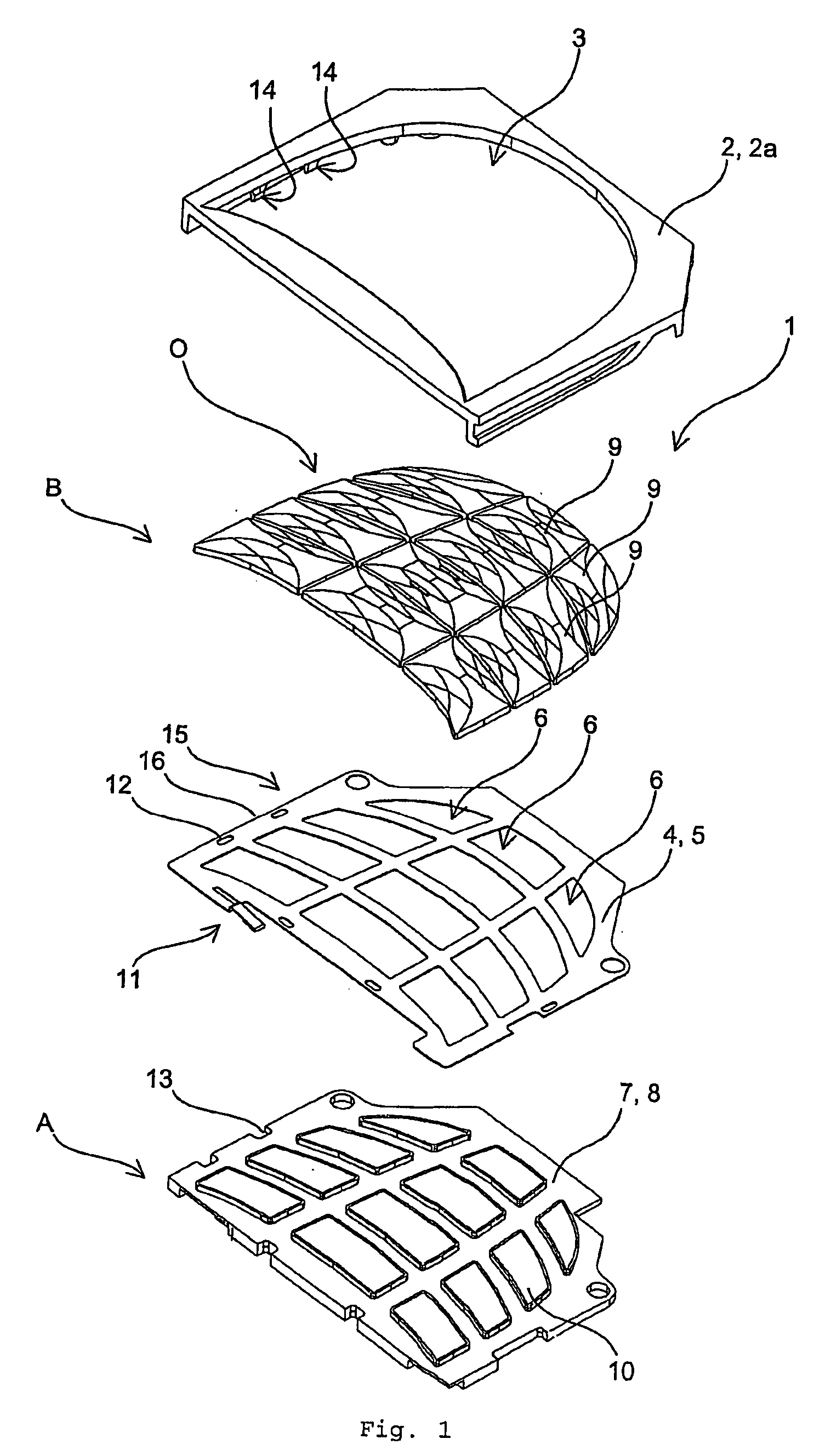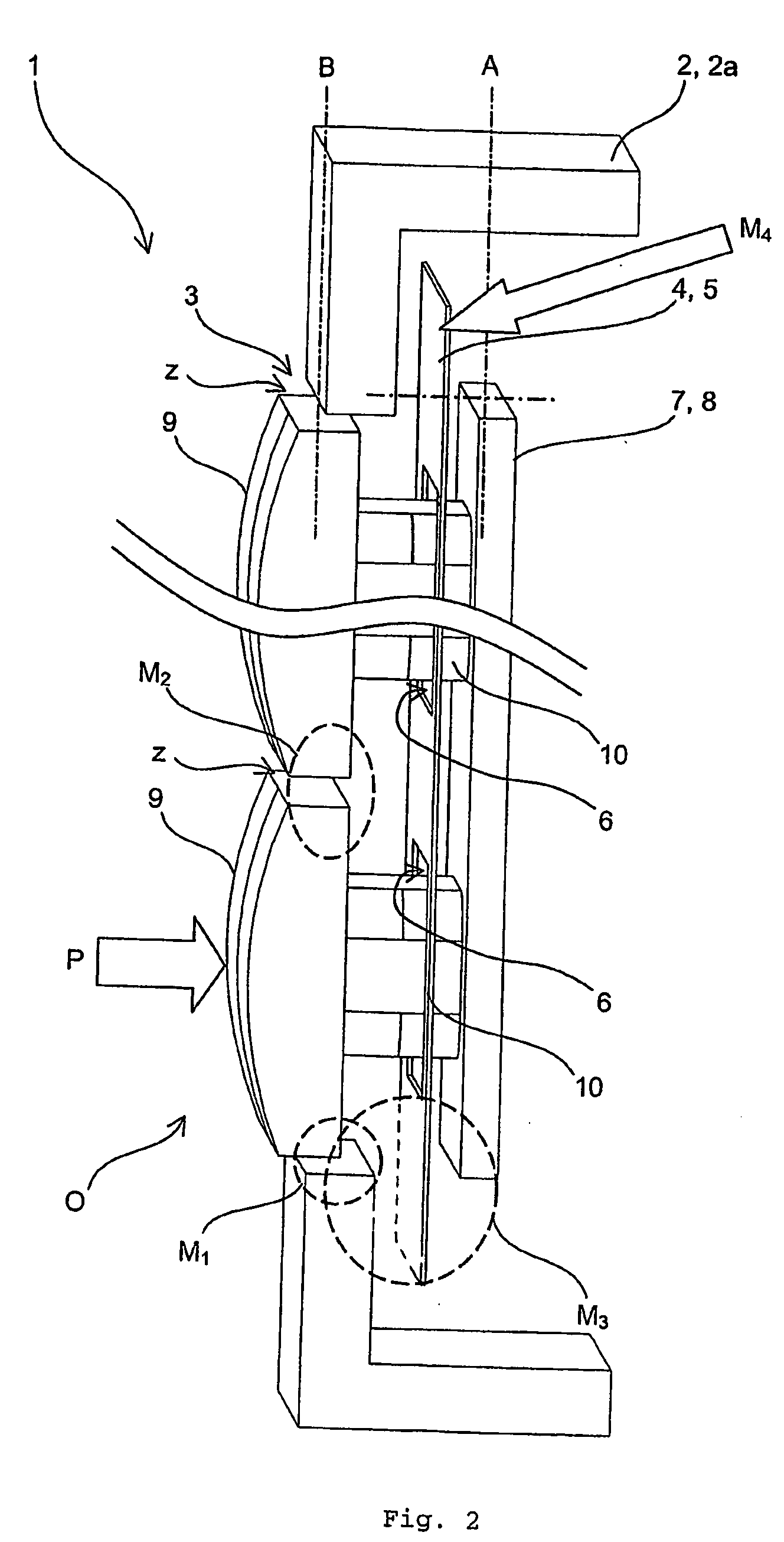[0011] Under one such embodiment an input device such as a mobile telephone is disclosed, comprising at least one cap which, in order to form at least one assigned key, is connected to a flexible carrier such that by pressing a key formed in this way, an input
signal is generated. At least one mechanically stable fixing means is arranged between a first plane comprising at least the cap and a second plane of the flexible carrier connected to the cap, such that the cap is configured, with the flexible carrier, to transmit force in a substantially punctual manner through the plane of the fixing means and such that the fixing means is configured in one area of at least one terminal edge so as to secure the input device in or on a housing. The fixing means is enclosed in a form-locking manner between cap and carrier, thereby ensuring, within the limits necessary for key actuation, mobility of the cap as the
actuator in a
user interface.
[0012] Under the embodiment, the mechanically stable fixing means discussed above is fashioned as a
metal sheet. The
metal sheet is preferably fashioned as a lattice with recesses in the form of punched holes through which the individual keys can move in a direction of actuation within the limits necessary for triggering a
signal. Based upon the target of a mechanically sufficiently stable fixing means which can safely be represented in the form of a
metal lattice, very large recesses can also be selected so that in particular very good or substantially complete illumination of the respective key caps is possible.
[0013] In a preferred embodiment, a cap is molded onto the flexible carrier especially as the result of a
thermoplastic molding and / or remolding process, after the fixing means has been assembled with the flexible carrier. In the area of the
user interface, perpendicular to a direction of actuation, the cap has in at least one
spatial direction a dimension which is greater than an opening in the fixing means. The cap preferably has at least in one
sectional plane parallel to the direction of actuation an approximately
mushroom-like cross-sectional form. Under the embodiment, the flexible carrier protruding through a recess of the fixing means at least in one area of a key then forms with the fixing means an indivisible module. Thus, in addition to improved handling through enlargement of the cap in contact with a finger of a user, this also achieves the outcome that the cap, in the event of excessive force being used during
signal input, cannot get stuck or be pressed in permanently through a recess in the fixing means. In interaction with the fixing means, the cap functions limit movement in the direction of actuation, as a result.
[0014] In another exemplary embodiment, in place of the at least one key and the flexible carrier from one material, a multi-part and in particular multi-
material design is provided. Here, the caps are manufactured as individual parts from, in particular, a translucent material and are connected to the flexible carrier. The materials can thus be optimally selected according to their respective intended application, i.e. the cap in terms of good and long-term wear-resistant pressability coupled simultaneously with good illumination, and the flexible carrier in terms of good long-term flexibility under continuous loading with no major tendency to crack or wear and also good
dirt-resistance.
[0018] In an alternate embodiment, at least one terminal edge of the fixing means is configured, for securing the input device in or on a housing, as a type of overlapping periphery and / or
flange, this preferably being two respectively opposing terminal edges of the fixing means. These areas can largely be shaped freely without influencing the actual input device.
[0019] In yet another exemplary embodiment, fixing means are fashioned as protection against
electrostatic discharge or as ESD protection. To this end, the fixing means is connected as an
electrically conductive element internally in the housing to a grounding conductor, for example through a clamping contact which is produced automatically in the course of assembling the housing with the input device. This ensures leakage of ESD sparks.
 Login to View More
Login to View More  Login to View More
Login to View More 


